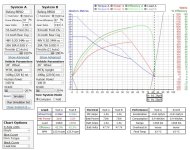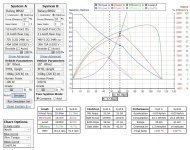Hi,
I have a 48V 25Ah battery pack that I use with BBS02b. I don't know the make of the cells but I suspect the maximum discharge rate is no more than 20A. Since the top speed (48km/h) or average speed (40km/h) on flat is not sufficient, I am thinking of upgrading the battery pack to 52V by adding a set of 10 18650 cells in series. What do you think would most likely happen:
a) One of the pack would heat up and may catch fire
b) Increase in average speed
c) Increase in range only
If you choose (a) then please suggest the best course of action for renovating the ebike.
I have a 48V 25Ah battery pack that I use with BBS02b. I don't know the make of the cells but I suspect the maximum discharge rate is no more than 20A. Since the top speed (48km/h) or average speed (40km/h) on flat is not sufficient, I am thinking of upgrading the battery pack to 52V by adding a set of 10 18650 cells in series. What do you think would most likely happen:
a) One of the pack would heat up and may catch fire
b) Increase in average speed
c) Increase in range only
If you choose (a) then please suggest the best course of action for renovating the ebike.



